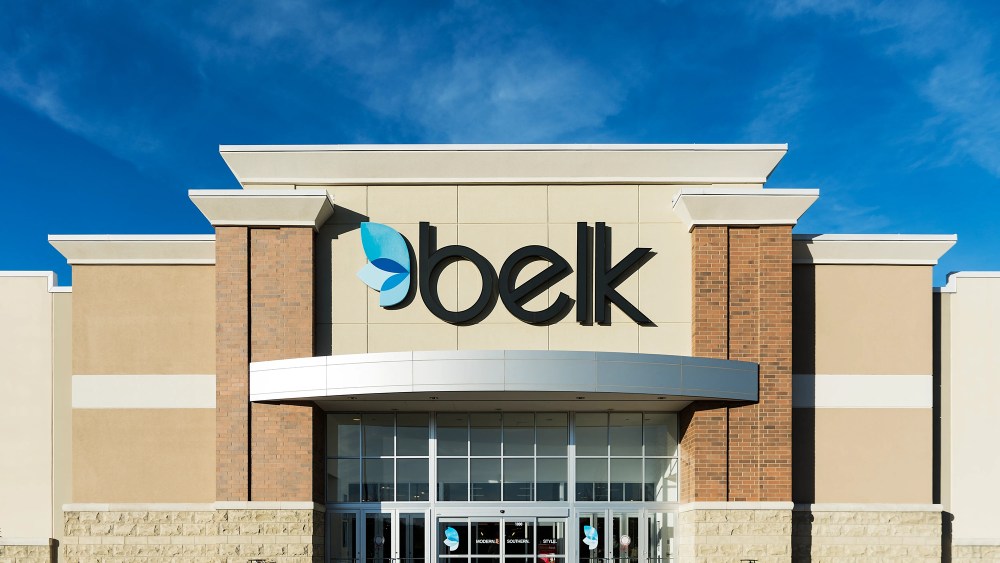
When Belk Inc. traded hands last month, the new owners — KKR and Hein Park — didn’t so much move in as move up the retailer’s capital structure.
The two investment firms already had a piece of the action at Belk, but they were loaners, now owners.
KKR and Hein Park swapped their debt for equity, taking another shot at the investment and taking over from Sycamore Partners, which bought the now-291-door retailer from the Belk family for $3 billion in 2015.
Belk has been in trouble before.
You May Also Like
It cycled through a very quick pandemic-fueled bankruptcy in 2021. But this change was something different for the Charlotte, N.C.-based department store chain, which is continuing to execute its strategic plan under new owners.
Belk is not the only retailer to find its lenders become its owner. Neiman Marcus, Men’s Wearhouse-parent Tailored Brands Inc. and others have gone through the same transition.
For the company, the process can lead to less debt, lower interest payments and, theoretically, a new lease on life.
For the investors, it’s something like Plan B.
“There is an inflection point where you have more debt than you can stomach,” said attorney David Wender, who is the U.S. head of Eversheds Sutherland’s corporate debt advisory-financial restructuring group.
“It’s not when you first take on the debt, it’s when you take on the debt to do something and it doesn’t have the [intended] results or there’s a change in the economy or a change in interest rates. It creates those situations where you might be upside down. You may not be able to carry your debt as well as your original projection showed.”
Whereas traditional banks used to cover retail’s lending needs, corporate debt has been standardized in a way that has allowed it to be traded between investors like a stock, inviting in private equity firms and other funds.
A bank would not typically take ownership of a business and run it. But these other players — Wender calls them “unregulated institutions” since they don’t operate under the same rules as banks — can and do.
Wender said these investors go in hoping that the loan is repaid in the normal course but know that “if we have to go in and take control, we have a strategy where we think we’ll get, we’ll maximize value in that situation as well.”
On the upside, the debt and interest payments can go down dramatically for the business.
“The hope is, OK, now we have this extra money, we can renovate the stores, we can improve our technology, we can improve our website, we can improve our product mix,” he said. “And if we do that, we think that we’ll make it and we will save a bunch of money.”
Lenders outside the traditional banking system look at companies through different eyes and can use assets like inventory or intellectual property as collateral, getting comfortable with situations that would turn off a bank.
“The vast majority of lenders don’t get into a loan with the objective of taking control of the equity,” said Dan Rubin, managing director of ReStore Capital, which specializes in “asset-based capital solutions” for companies that are generally in distress.
“Lenders generally want their money back,” Rubin said. “And when you provide a loan to a company and then you restructure that into equity, it just continues to push out the duration of the investment.”
But it happens — and it looks like it will keep happening.
“There’s just been dramatic volatility in the cash flows of retail companies over the past several years,” Rubin said.
Part of that has flowed from the various COVID-19 disruptions, on the consumer, the supply chain and more. And part of that comes from a simple evolution in fashion, which is still trying to come to grips with the rise of e-commerce, changing consumer habits and the rest of it.
Interest rates can also exact a heavy toll on finances as companies that took debt when rates were low will have to refinance at higher rates.
“I don’t want to say it’s an overarching theme, but you had companies that leveraged up because equity was not there to support them,” Rubin said. “At some point that debt is going to come due. I’m not saying there’s a looming massive maturity wall coming up, but there are going to be a significant amount of maturities coming up.”
That means more companies are going to be headed toward a crunch time needing lenders that are a little more creative.
The Bottom Line is a business analysis column written by Evan Clark, deputy managing editor, who has covered the fashion industry since 2000. It appears every other Thursday.



